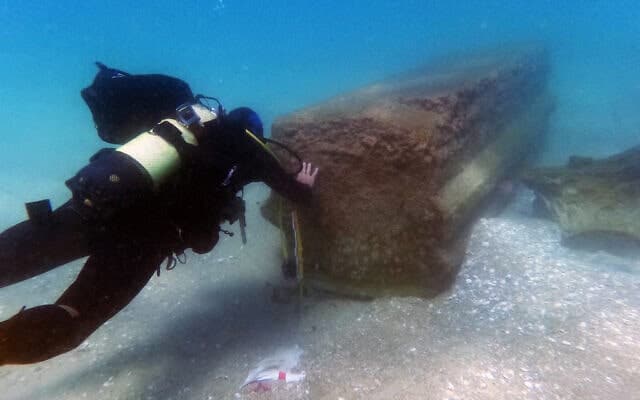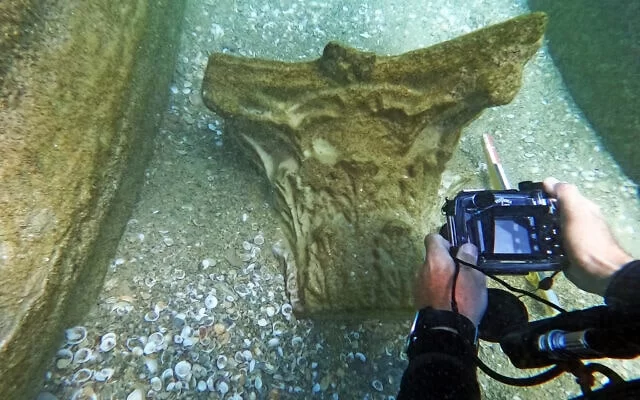A collection of rare marble artifacts was uncovered at a 1,800-year-old shipwreck just 200 meters from the shore of the Israeli town of Beit Yanai.
While swimming in the area, Gideon Harris stumbled upon the find by diving about four meters under the sea.
The oldest sea cargo of its kind ever found in the Eastern Mediterranean, the haul includes approximately 44 tons of marble pieces dating back to the Roman Empire. The raw materials, likely from Ancient Greece, were destined for a southern port in the Holy Land. The marble blocks are believed to have been intended for use in the construction of public buildings, possibly a temple or theatre. Archaeologists plan to excavate the site next week to search for ship wood remains.
According to the Israel Antiquities Authority (IAA), the cargo from the recently discovered 1,800-year-old shipwreck off the coast of the Israeli town of Beit Yanai is believed to be the oldest of its kind found in the Eastern Mediterranean. The 44 tons of Greco-Roman period marble architectural pieces were probably en route to a port in the southern Levant, but the ship ran into trouble. The IAA hopes to find remains of ship wood during upcoming excavations. The cargo included decorated, partially carved capitals and a massive 6-meter marble architrave or door lintel in the ship's hold.

“From the size of the architectural elements, we can calculate the ship's dimensions; we are talking about a merchant ship that could bear a cargo of at least 200 tons,” said Sharvit.
“These fine pieces are characteristic of large-scale, majestic public buildings. Even in Roman Caesarea, such architectural elements were made of local stone covered with white plaster to appear like marble. Here we are talking about genuine marble,” Sharvit explains.
Sharvit, the IAA’s underwater archaeology unit director, confirmed that there are no visible remains of the ship on the sea floor. He stated that the IAA would begin an underwater excavation with the University of Rhode Island students next week to discover waterlogged wood from beneath the massive marble blocks or a nearby underwater dune that may have buried and preserved parts of the ship.


